Love Your Trees? Keep Them Healthy with an Organic Feeding
If you start each day by sipping a cup of coffee and gazing at your trees through the window, then you know just how valuable trees are to your daily life. There is nothing quite like watching the evolution of seasons, from leaves budding, blossoming, changing color and eventually falling.
However, spring and summer offer spectacular viewing, just when our trees are in full flowering and blooming stages for the season.
Blooming trees are a sure sign of warmer weather and a shady escape from the sun. Plus, if they’re fruit trees, they offer that fresh homegrown taste of summer.
While your trees might look like they’re doing fine on their own, they need a bit of TLC from time to time.
Trees need proper food. When fed, shade trees grow larger and resist diseases better. Plus, fruit trees produce more fruit regularly when fertilized.
Reap the benefits and feed trees now before growth starts.
So, what plant food is right for your trees?
If you want less work (and who doesn’t?), use a slow release fertilizer to keep trees well fed until fall.
If you’re feeding fruit trees, an organic fertilizer is a must. After all, you and your family will be eating these homegrown fruits. The only way to get that piece of mind is to use a 100 percent organic fertilizer on fruit trees.
Organic Tree-tone from Espoma works wonders for all shade, fruit or ornamental trees. Since it’s made just for trees, this organic plant food provides the exact nutrients they need.
To know how much tree fertilizer to use, first measure your tree trunk all the way around, and at a height 4 feet above the ground. Divide that number by 3, and there’s your tree trunk diameter!
Fertilize New Trees When Planting:
Kudos for planting a tree! Trees help reduce the carbon footprint, increase home value, help prevent soil erosion and provide homes for our feathered friends.
To begin, dig a hole twice as wide and the same depth as the root ball. Then, arrange the tree at the same depth it was growing before and fill half the hole with compost or an organic peat moss.
For a trunk diameter up to 1.5 inches, use 4 pounds of Tree-tone. If the trunk is 2-3”, use 4 pounds of Tree-tone per inch. So, if your tree trunk is 2.5 inches, use 10 pounds of Tree-tone. And, for tree trunks over 3 inches, use 5 pounds of Espoma Tree-Tone per inch.
Now, mix in the organic Tree-Tone with the soil.
Pack soil to remove any air pockets, then water. Once the soil settles, fill the remainder of the hole with amended soil.
Next, evenly spread 2-3” of mulch around the tree’s drip line. Keep mulch far away from the tree trunk, and keep it even — not in a pile like a volcano.
Organically Feed Established Trees:
Do you have a small, medium or large sized tree? Small trees have up to 3” in trunk diameter, medium tree trunks are 3-6” and large trees have a diameter over 6”.
Feed Small and Medium Trees:
For small trees, use 3 pounds of Tree-tone. For medium trees, feed them 4 pounds of Tree-Tone per inch.
Sprinkle the organic tree food under and slightly beyond the branch spread.
Feed Large Trees with an Organic Fertilizer:
Large trees need food delivered right to their roots.
Under the tree’s outermost branches, make holes 2-3” in diameter, 12-18” deep and 2-3’ apart using an auger or iron bar.
Use 6 pounds of Tree-tone per inch of your tree’s diameter, and divide the organic tree food among the holes.
Then, fill holes with soil. Finish by watering.
What are your most loved trees in your yard? Comment below!
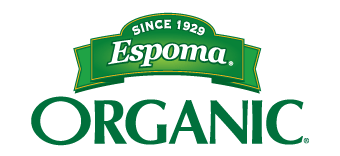
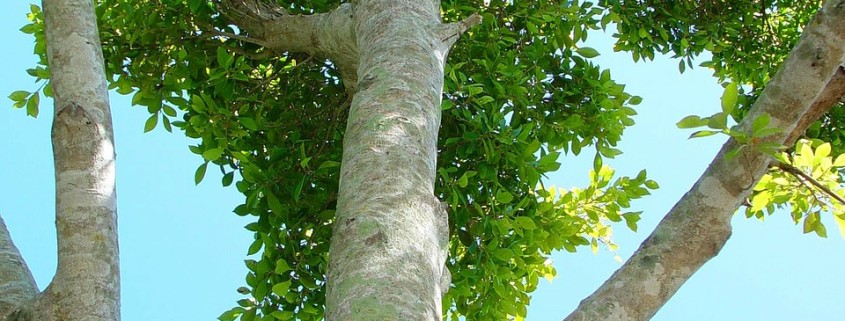
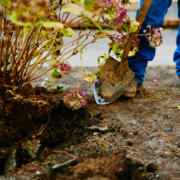
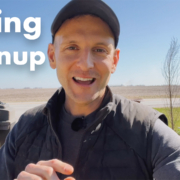
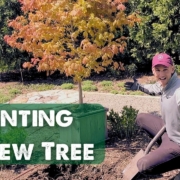
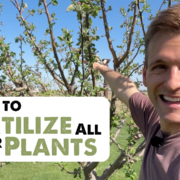
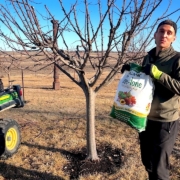

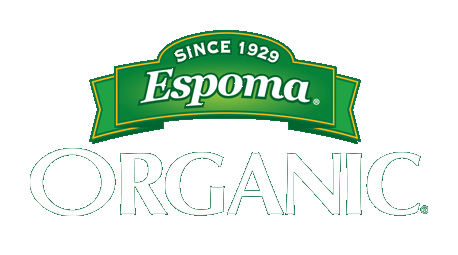
Comments are closed.